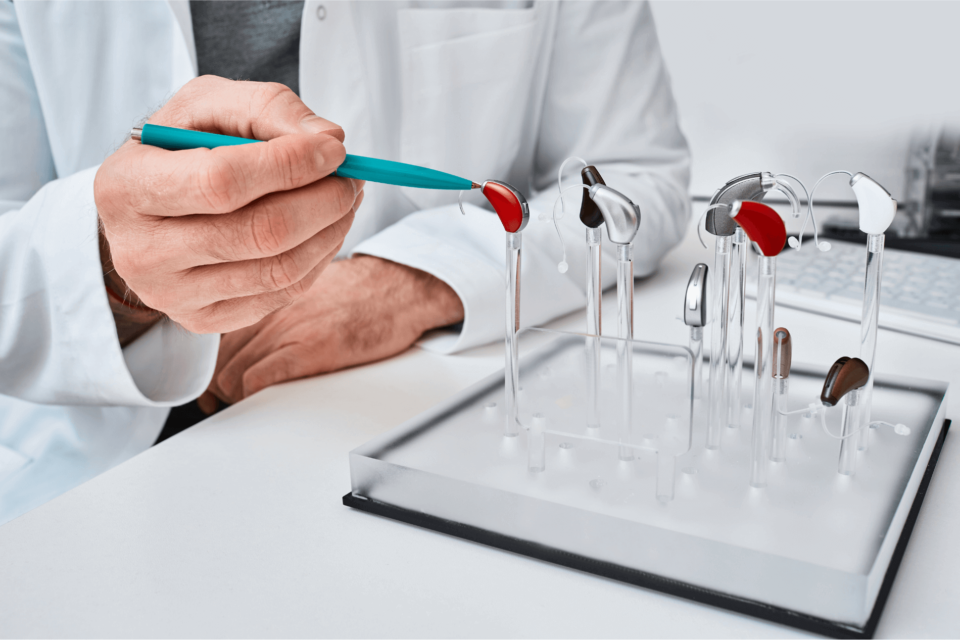- The Impact of Pets on Emotional and Hearing Health - April 26, 2024
- Strategies for Coping with Single-Sided Deafness - April 16, 2024
- Effective Strategies for Sharing Your Hearing Loss Journey - April 16, 2024
Modern hearing aids are not merely amplifiers; they are sophisticated devices equipped with advanced features that enhance user experience and bridge the gap between those with hearing loss and the vibrant world of sound. Contemporary hearing aids have a transformative impact for millions of people.
Digital Signal Processing (DSP): Elevating Sound Precision
Digital Signal Processing (DSP) is a game-changer in the world of hearing aids. Unlike analog processing, DSP allows for the precise manipulation of sound signals in real time. This means that modern hearing aids can differentiate between speech and background noise, adjusting amplification levels dynamically to prioritize clear communication. The result is a more nuanced and natural listening experience, even in challenging auditory environments.
Directional Microphones: Focusing on the Essence of Sound
One of the significant challenges for individuals with hearing loss is discerning speech in noisy settings. Directional microphones can address this issue by amplifying sounds from a specific direction while suppressing ambient noise. This adaptive feature enhances the clarity of speech, whether in a bustling restaurant or a crowded social gathering.
Bluetooth Connectivity: Integrating with Digital Life
The integration of Bluetooth technology has propelled hearing aids into the realm of connectivity, enabling users to seamlessly link their devices with smartphones, tablets, and more. Bluetooth connectivity allows for direct audio streaming, transforming hearing aids into personalized wireless headphones. Whether making phone calls, listening to music, or participating in virtual meetings, users can enjoy a direct and clear audio feed, enhancing their overall communication experience.
Artificial Intelligence (AI): A Cognitive Approach to Hearing
The infusion of Artificial Intelligence (AI) into hearing aids represents a paradigm shift in auditory technology. AI algorithms can analyze and adapt to users’ listening preferences and habits, continuously optimizing performance based on real-time data. This intelligent approach not only enhances sound quality but also anticipates users’ needs in various environments, offering a personalized and proactive listening experience.
Rechargeable Batteries: Sustainable Power Solutions
Rechargeable batteries offer a more sustainable and user-friendly power solution. Rechargeable hearing aids eliminate the hassle of frequent battery replacements, providing users with a convenient and environmentally conscious option. These advanced batteries often come with quick-charging capabilities, ensuring that users can enjoy prolonged usage with minimal downtime.
Telehealth: Remote Auditory Care
Telehealth has become increasingly prevalent across healthcare, and hearing health is no exception. Modern hearing aids often come equipped with telehealth features, allowing users to connect with hearing health specialists remotely for adjustments, consultations, and follow-ups. This not only enhances accessibility but also empowers users to receive personalized care without the need for frequent in-person visits.
Tinnitus Masking and Sound Therapy: Addressing Ringing Ears
For individuals grappling with tinnitus, a persistent ringing or buzzing in the ears, modern hearing aids offer innovative solutions. Many devices now include built-in tinnitus masking and sound therapy features. These functions provide soothing background sounds or customized noise patterns to help mask the perceived noise of tinnitus, providing relief and improving overall well-being.
Feedback Suppression: Silencing Unwanted Whistles
Feedback or whistling sounds have been a challenge in hearing aid technology. Advanced feedback suppression algorithms now effectively identify and cancel out feedback before it reaches the user’s ears. This feature ensures a more comfortable experience, allowing users to enjoy the benefits of amplification without the distraction of unwanted noise.
Environmental Adaptation: Dynamic Settings for Varied Surroundings
Modern hearing aids are designed to adapt dynamically to diverse environments. Utilizing sensors and algorithms, these devices can detect changes in surroundings and adjust settings accordingly. Whether transitioning from a quiet home environment to a bustling street or a windy outdoor space, users experience seamless transitions, optimizing their auditory experience in real time.
Customizable Apps: Tailoring Hearing Experiences
Complementing the physical features of modern hearing aids are customizable mobile applications. These apps empower users to personalize and control various aspects of their hearing aid settings. From adjusting volume levels and choosing directional focus to managing environmental presets, these apps offer a level of control and customization that puts users in the driver’s seat of their auditory experience.
Find Your Next Hearing Aids
The technological advancements in modern hearing aids extend far beyond the basic function of sound amplification. They can offer transformative experiences, enabling users to participate fully in social, professional, and recreational activities.
Ready to experience the difference? Visit us today to find your next hearing aids.

